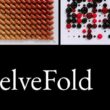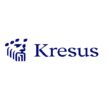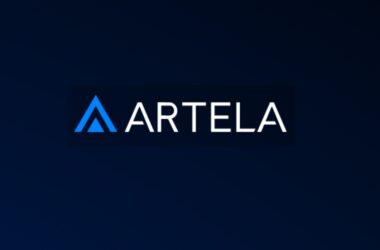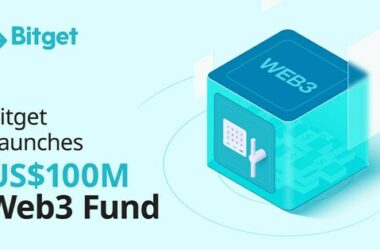Quick take:
- The UAE and Saudi Arabia are leading the MENA region into the world of web3.
- A Strategy & Middle East report claimed in December 2022 the metaverse could be generating $15 billion per year for the Gulf economy by 2030.
- The region has become a magnet for investments and partnerships working on web3 and metaverse projects.
While the west is grappling with the question of regulating web3 and the metaverse, the MENA region has taken a giant leap towards leading the campaign into the next iteration of the web.
In December, we published an article that provided a glimpse of the metaverse opportunity in the Gulf region. Strategy & Middle East a PwC subsidiary managed to put a figure on the opportunity predicting a $15 billion increase in GDP by the year 2030.
In eight years, the metaverse is expected to add $7.6 billion and 3.3 billion every year to the GDPs of Saudi Arabia and the UAE, respectively.
Although these figures may sound bombastic, there are breadcrumbs everywhere that support the forecasts.
Earlier in 2022, Saudi Arabia launched a $6.4 billion tech fund to invest in blockchain, the metaverse and other advanced technologies. At the same time, the company building the country’s futuristic city Neom announced a $1 billion commitment to a “cognitive metaverse project” that will allow visitors to tour and experience the virtual city before the physical one of completed.
In May, Dubai launched a strategic plan that would see the metaverse inject $4 billion into the economy while creating more than 40,000 jobs by 2030.
And last month, Abu Dhabi just launched a $2 billion initiative to back web3 startups. The initiative draws a clear picture of how multinational web3 companies are willing to invest in the region. Driven by the State’s tech ecosystem Hub71 in the Abu Dhabi Global Market (ADGM), the Hub71+ Digital Assets fund, taps into Venom Foundation’s $1 billion web3 fund, Binance’s $500 million crypto fund and others creating an ecosystem of $2 billion worth of commitments.
So why exactly is the MENA region attracting investments and web3 companies from all over the world?
There is a convenient legal framework
The UAE has been one of the leading nations when it comes to crypto regulation. The Emirates of Dubai and Abu Dhabi, in particular, have established a clear regulatory framework that governs trading and investment in virtual assets.
In March 2022, Dubai formed the Virtual Asset Regulatory Authority (VARA) to regulate Virtual Assets Service Providers (i.e., a crypto exchange, a crypto VC fund, an NFT platform, etc.) across the Emirate of Dubai.
On the other hand, the Financial Services and Markets Regulations 2015 (FSMR) amended its regulatory framework in the Abu Dhabi Global Market (ADGM) in 2018 to include crypto services. Several companies were issued with licenses to operate crypto exchanges or crypto custody services, with the most notable being Binance custody.
Although Saudi Arabia does not have the same type of structure for investing in digital assets, the country banned crypto trading in 2018, with banks barred from processing crypto transactions. However, non-fungible tokens are not categorised under cryptocurrencies, which is why they have drawn more attention from investors.
Investing in web3 and metaverse projects is well-backed by the government, with the country already testing a new metaverse experience dubbed Muraab “Metaverse Cube”, said to be the size of 20 Empire State buildings. The cube will be located in a new sci-fi city of the future the New Murabba in Riyadh.
Elsewhere, UAE’s Sharjah City has launched the world’s first government-backed metaverse city, Sharjaverse. The 2,590 square kilometre city is a partnership of the Sharjah Commerce and Tourism Development Authority and Multiverse Labs.
This type of initiative and support structure offered in the MENA region is what continues to attract companies both local and foreign, to web3.
Singapore-based DWF Labs, a digital asset trading service provider is one of the firms that have targeted the MENA region for their global expansion campaigns.
In an exclusive comment to NFTgators regarding the support structure and the regulatory framework provided in the region, Andrei Grachev, managing partner of multistage Web3 investment firm DWF Labs said the clear framework instils confidence in investors.
Andrei also thinks the MENA region has a great deal of untapped talent that web3 companies can benefit from.
“The region has a relatively untapped pool of skilled talent, including blockchain developers, designers, and marketing professionals,” Andrei added. “[In addition], MENA has made significant investments in infrastructure, including high-speed internet connectivity and cloud computing which are essential to support decentralised networks.”
Yat Siu, co-founder and executive chairman of Animoca Brands shares the same sentiment. His company recently signed a strategic partnership with the Middle East-based Manga Productions to launch web3 products in the MENA region. The companies want to bring Manga Productions’ range of content to web3.


Commenting on the reasoning behind the partnership, Siu said: “The MENA region has a young and dynamic population that is highly receptive to new technologies, thus we saw an opportunity for the many benefits of Web3, NFTs, and the open metaverse in this region. By partnering with local businesses such as Manga Productions we aim to lead the development of Web3 and the open metaverse in MENA.”
On the other hand, Junaid Gulzar, Co-Founder and CTO of metaverse real estate company, Windfall cited the region’s openness to innovation and the booming real estate market as key motivators.
“The use of blockchain technology in real estate has the potential to transform the industry, making it more accessible and efficient for investors. Additionally, based on my professional career in real estate, focusing on the Middle East was the natural first step Hence, we opted for the UAE and Saudi Arabia in particular.”
The region has shown no ego
Despite its riches, the MENA region has shown no ego, establishing strategic partnerships with expert external parties to accelerate web3 adoption. And some of the companies have been impressed by the region’s commitment to embracing new technologies.
Some of them like DWF Labs think NFTs could be among the products that could drive web3 adoption in the region. The company thinks there could be a lot more to be done with non-fungible tokens, adding that the opportunity is not fully explored.
“The market potential for NFTs is much higher than the current capitalisation, and the technology use cases for NFTs have been barely explored. There is so much more that can be done using non-fungible tokens in several web2 industries, facilitating the transition to a web3 economy,” said Andrei.
The company aims to unlock the full potential of NFTs and the metaverse in the Middle East.
Meta Platforms and Animoca Brands subsidiary — The Sandbox, are some of the big web3 and metaverse players that have ongoing partnerships in the region.
Saudi Arabia’s oil and gas giant, Aramco has recently collaborated with blockchain tech startup droppGroup to build web3 technologies that could be used to help its workers.
Like DWF, Windfall’s Gulzar thinks NFTs could play a big role in the web3 and metaverse sectors in the coming years. Adding decentralised finance to his hot sub-sectors to watch, he said that they have attracted both public and private sectors, which he says “have continued to offer a new canvas for fintech to experiment and create new products and services for multiple stakeholders, including investors, brands and importantly, consumers.”
Crypto Winter or Crypto Spring?
The crypto winter has certainly slowed funding in web3 over the past eight months. However, as demonstrated by Animoca Brand’s recent partnership with Manga Productions, the market downturn has not stopped web3 companies from betting on the MENA region.
Even as recently as March second, Dubai’s DMCC tapped DWF Labs as an ecosystem partner to establish DWF Ventures Studio, “which will support nascent web3 and blockchain businesses using the DMCC Crypto Centre and Dubai.”
The web3 investment company thinks the whole crypto winter talk is overblown, “it feels more like a crypto spring…” Andrei said.
“While the prolonged bear market in the cryptocurrency industry has had a significant impact on web3 funding globally, the impact on the region has been relatively limited. However, this has not stopped investors from focusing on the long-term potential of the sector and remaining willing to weather short-term fluctuations,” added Andrei.
On the other hand, Gulzar thinks the role of public and private investors in the industry has been crucial. “Public and private investors alike have shown continued interest in supporting web3 ventures. This healthy combination is poised to drive further growth in the sector, attract consumers, and ultimately develop the region,” said Gulzar.
Siu’s Animoca Brands sees the bear market as an opportunity to invest in promising projects at more attractive valuations.
“We consider ourselves as a counter-cyclical investor, and we see market downturns, or the “crypto winter”, as an opportunity to invest in promising projects and companies at attractive valuations,” said Siu.
And Eikonikos’ Chief Metaverse Officer, Sanjar Mohamed agrees. “As in any market, Crypto winter will have an effect on the funding, especially with FTX, Luna etc issues in 2022, everyone will be very cautious. Having said that, crypto winter also presents opportunities for web3 and metaverse startups that have a strong team and other fundamentals to build during the time and to position strategically during a bullish market,” said Mohamed.
However, given the diverse nature of the industry, Mohamed wants to see more policy initiatives from various countries to determine which segments are likely to drive future growth.
“The web3 and metaverse industry is quite vast and diverse. It can include DeFi, NFTs, Virtual worlds and blockchain-related uses in each of the specific industries. We will need to see better policy initiatives in some of the spaces. VC funding and the prospect of growth also develop on technology maturation and user adoption in the coming users. My bet is on decentralized Virtual worlds and gaming,” said Mohamed.
Exciting Future?
Looking forward, as the crypto market begins to recover from 2022 woes, the MENA region promises to be in the mix of beneficiaries. The foundation laid from a regulatory perspective, project funding and expert external partners have fueled optimism for investors in the region.
DWF Labs expects more collaborations, possibly leading to a consolidation of the web3 and metaverse markets in the region.
The company’s recent partnership with DMCC saw it launch a $5 million platform as it seeks to back web3 and blockchain businesses.
“Through this partnership, we aim to invest in 50 startups operating in the web3 space, with multiple additional investments for the best-performing companies, and a $500,000 investment for the cohort’s most prominent business,” said Andrei.
Siu, on the other hand, highlighted recent announcements of web3 incubators, funding and government initiatives as a show of commitment by the region to fostering a thriving ecosystem.
“We believe that the MENA region has the potential to become one of the global leaders in the Web3 industry, driven by its government and young and technologically savvy communities,” he said, adding that web3 will also “bring financial inclusion in the region,” helping to onboard the unbanked or underbanked into the economic network.
****
Stay up to date:
Subscribe to our newsletter using this link – we won’t spam!





